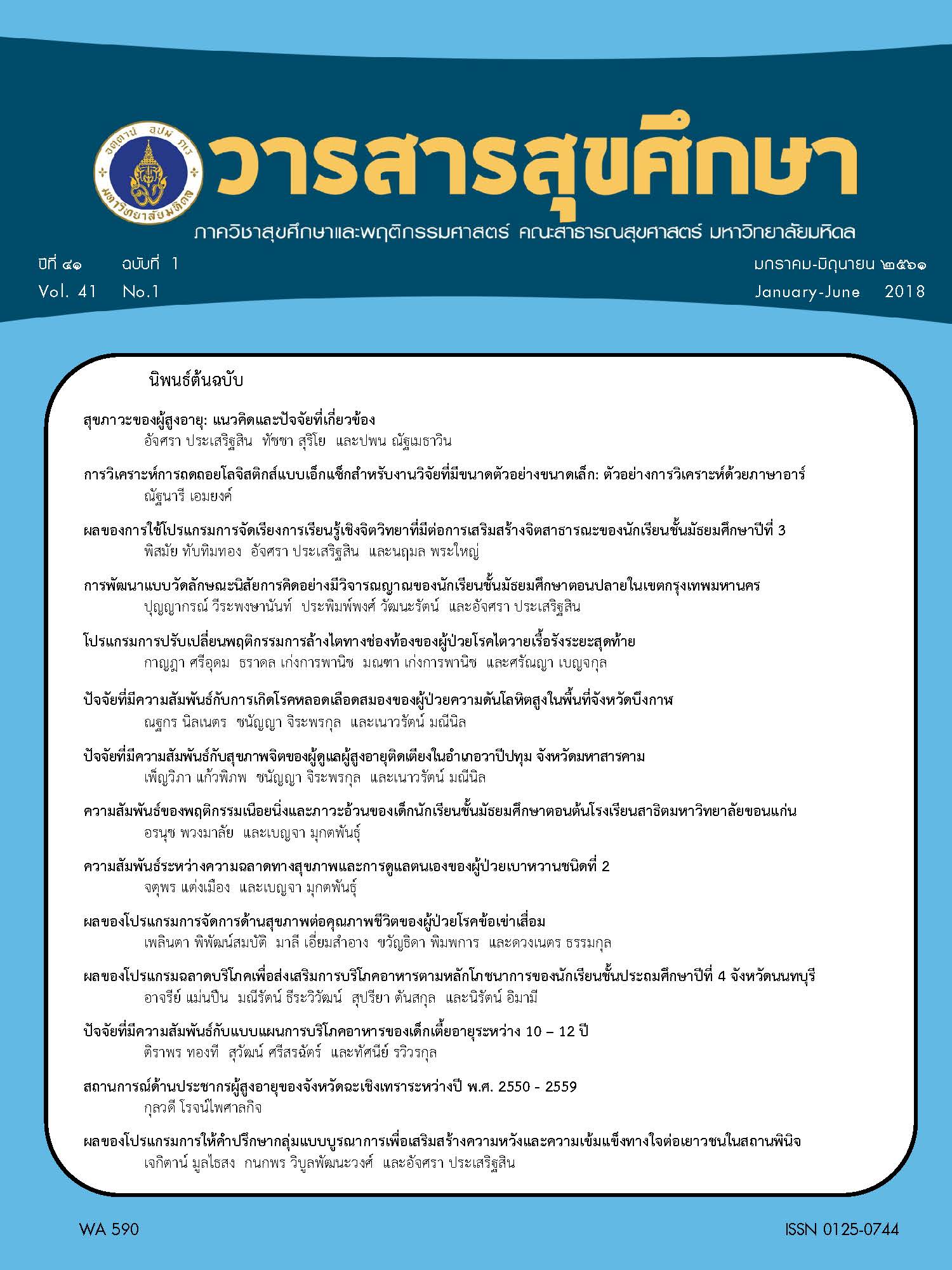Association of Sedentary Behavior and Obesity of Junior High School Students at Khon Kaen University Demonstration School
Main Article Content
Abstract
The prevalence of childhood obesity in Thailand was increasing and sedentary behaviors (SB) might contribute to this trend. This cross-sectional analytic study aimed to investigate the association between SB and obesity status of school adolescents. Total 304 middle school students (grade 7-9) from Khon Kaen University demonstration school were selected. Data on characteristic, socio-economics, SB (spending time for homework and tutorial, screen viewing time), physical activity and food consumption were obtained through a structured questionnaire. Nutritional status was assessed by using BMI for age as an indicator by WHO AnthroPlus program. Multiple logistic regression was analyzed the association between SB and obesity status adjusted by gender, food provider, physical activity and food consumption. Results showed that 61.5% of the subjects were female, 22.0% and 14.1% were overweight and obesity. The average spending time on SB was 11.6 ±3.7 hours/day, of this amount of time, an average time spend for homework and tutorial, and screen viewing time were 5.7 ± 2.3 and 5.9 ± 2.8 hours/day. For multiple logistic analysis indicated that screen viewing time ≥ 5 hours/day was significantly associated with obesity (adjusted OR = 2.03, 95% CI: 1.00-4.11). Other factors which were found to be associated with obesity were self-care of the subjects (adjusted OR = 2.36, 95% CI: 1.20-4.64), frequency of fried food consumption ≥ 4 times/week (adjusted OR = 2.58, 95% CI: 1.24-4.97), on the other hand, frequency of sweetened beverage ≥ 4 times/week inversely associated with obesity (adjusted OR = 0.40, 95% CI: 0.19-0.86). In conclusion, spending much time for screen viewing affected to be risky of obesity. For reducing the risk of obesity, the school should launch the projects to promote physical activity of the students for reducing screen viewing time and also promote healthy eating which emphasized on reducing fried food consumption, especially in the students who are self-food provider.


